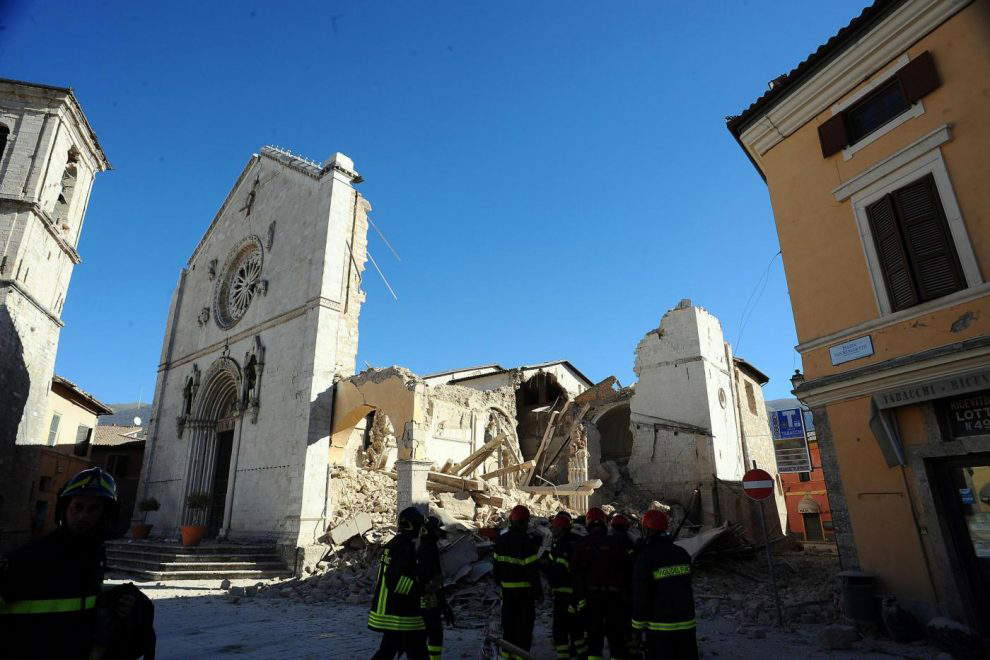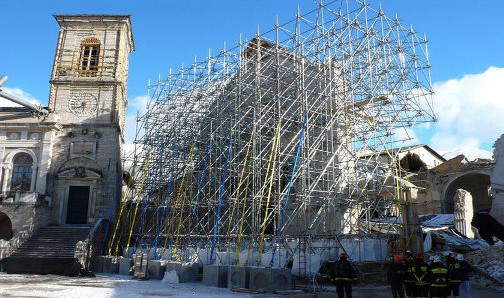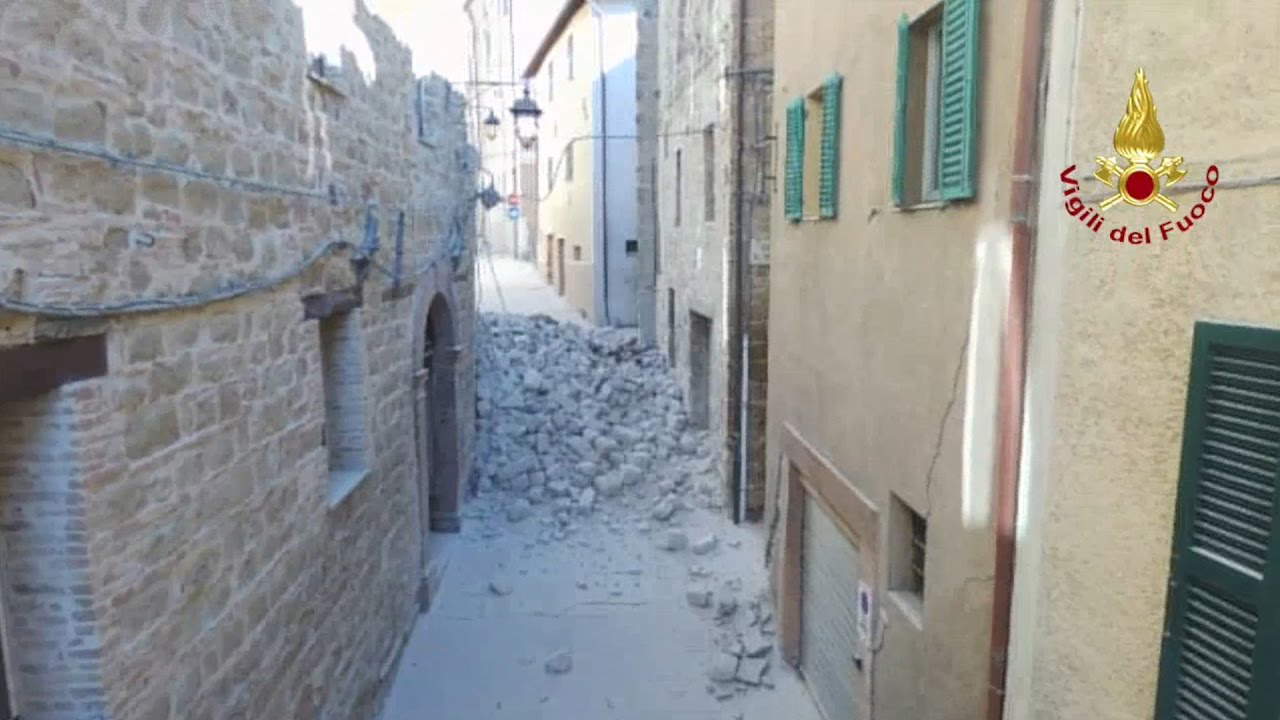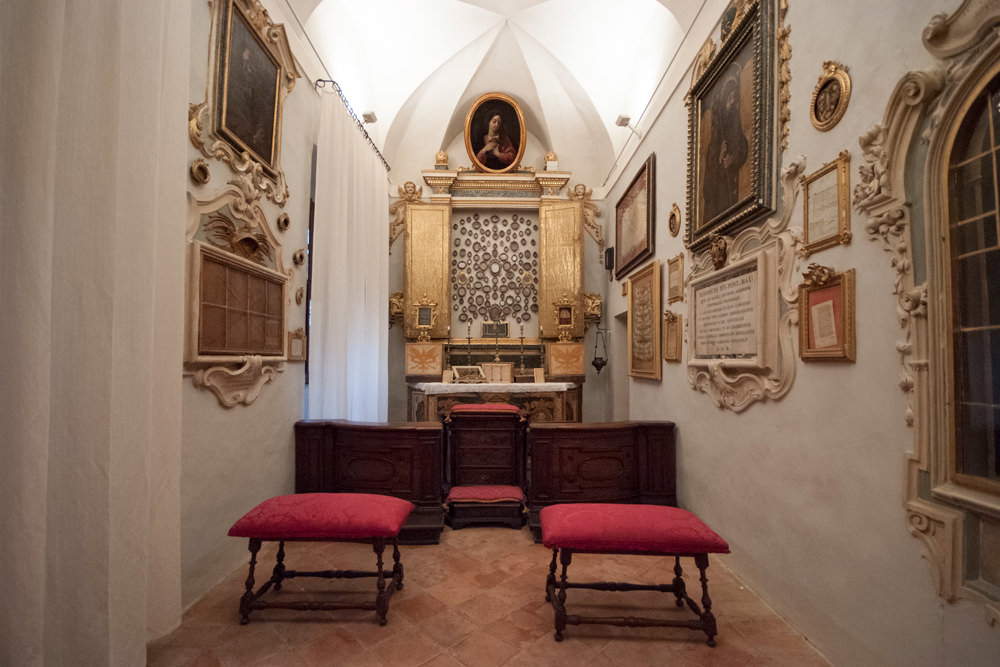On Aug. 24, 2016, at 3:36 a.m., an earthquake tremor of magnitude moment 6.0 struck central Italy, and in particular the municipalities of Accumoli, Arquata del Tronto and Amatrice, between which was the epicenter of the quake. The area has since been hit several times, even months apart: most notably the 6.5-magnitude quake on Oct. 30, 2016, with epicenter between Norcia and Preci (Perugia), the strongest recorded in Italy since 1980. The effects of the quake were felt over a vast area straddling three regions, namely Umbria, Lazio and Marche. An event that had heavy consequences on people’s lives and on the cultural heritage of an area rich in art and culture. Exactly three years after the earthquake, we caught up with Alessandro Delpriori, an art historian specializing in medieval art and, from 2014 until May 2019, the mayor of Matelica (Macerata), one of the municipalities in the crater (there, following the October tremors, there were 1,500 evacuees out of a total of just under 10,000 inhabitants). With him, we took stock of the situation with regard to both reconstruction and the state of cultural heritage in the affected areas. The interview is by Federico Giannini, editor in chief of Finestre sull’Arte.
 |
| Alessandro Delpriori |
FG. After three years since the earthquake that struck central Italy in 2016, where are we with the reconstruction and the accommodation of those who lost their homes?
AP. Reconstruction is going very slow. There are so many applications that have not yet been processed by the administration, and there are two problems: the first is that the bureaucracy is very complicated, so the private technicians who are in charge of reconstruction often do not have the structure to follow all the paperwork. They could have hired more staff, but advance payments have been denied: this means that the professionals who are working on reconstruction have to wait years before they are paid for a project, and this means, on the part of the technicians, they are unable to hire more staff. The second problem is that Marche’s regional structure, the USR (Special Reconstruction Office), does not have enough staff to control all procedures, because ANAC President Raffaele Cantone has ruled that, for the earthquake, all procedures must be 100 percent controlled, so the timeframe is getting longer. As for the accommodation of the inhabitants, it was a problem solved right away: in the first four months everyone already had a roof over their heads, apart, of course, from a few sporadic cases. Some houses, for example, arrived a little slower, however, the emergency was handled very well. It is the reconstruction that is going slow.
In your opinion, who are the main culprits in this situation?
I think, absolutely, the fault lies mainly with the governments that worked on the earthquake and started a reconstruction model that does not work. As mayor, I attended many meetings, including with Vito Crimi, undersecretary of state in the Prime Minister’s Office of the Conte government with responsibility for earthquake areas: Crimi also said that we are part of the problem, but then he did nothing for us.
You were mayor of Matelica, one of the crater municipalities, during the emergency phases and after. Three governments have come and gone in these years. In your opinion, how were the various phases, first of the emergency and then of reconstruction, handled by the different governments?
They were different phases and so different were the approaches. The first was the Renzi government: Matteo Renzi went to us mayors asking what we needed and proposing to work together. I have to say that all in all, although they chose the same model for us as Emilia-Romagna (wrongly, because Emilia-Romagna is not Marche and Marche is not Emilia-Romagna, and that model was wrong for us), at least there was a confrontation. With the Gentiloni government and with Paola De Micheli (the second extraordinary commissioner after Vasco Errani), relations were oriented more toward the future and toward a strategy: that is, they were thinking about what to do next. In short, while Renzi and Errani dealt with the emergency itself (although appointing Vasco Errani as commissioner for reconstruction was a mistake: the reconstruction, at that time, could not start, because we were still in the emergency stages, and there we had to find a roof for all citizens, a Civil Defense problem, so we found ourselves with two heads, one was Errani and the other Fabrizio Curcio, head of the Civil Defense, and moreover the two, between them, also spoke little to each other), Gentiloni and De Micheli talked about a strategy. Of course, a very long, slow and even unworkable strategy in some respects, but at least there was a vision. The last government, on the other hand, did absolutely nothing. They didn’t even do the catwalks. Before, at least they were showing up. Now it is total nothingness.
 |
| Damage to the basilica of St. Benedict in Norcia immediately after the 2016 earthquake |
 |
| St. Benedict’s basilica secured |
 |
| Damage in the historic center of Camerino in the early days of the 2016 earthquake (photo Fire Department) |
 |
| Damage in the historic center of Camerino immediately after the earthquake (photo Fire Department) |
In addition to being mayor you are an art historian. From that perspective, where are we with the reconstruction of the buildings that were damaged, and with the arrangement of the works of art? How much of the heritage is still in storage waiting to go home?
I think a 95 percent of the works are still in storage. I think about 18,000 objects that have been moved from their locations are still lying in storage. Some storage has been made usable, for example in Camerino, Amandola, Matelica (here we have some rooms in the Piersanti Museum opened to show some of the works that can be seen in rotation). However, most of the objects are still closed. There is a complete lack of a long-term strategy here: the reconstruction of historic buildings is very slow, even I don’t think any of the construction sites for the second cultural heritage plan, the one that covers most of the sites and was approved very recently, has started. On the other hand, as far as the first cultural heritage plan is concerned, one church per city had been restored, and these buildings have actually been reopened (cathedrals especially). However, it needs to be reiterated that, on cultural heritage, the goal must not be reconstruction for its own sake: we need to bring to life a model, including the fruition of cultural heritage. We cannot let the wonders of our places at the next earthquake close and start over: there must be a total strategy. What is most frightening is that the damage to the heritage is so great and so widespread that we are beginning to feel, in the meanderings of the superintendencies and the ministry, that choices have to be made, that is, that there will be something that will not be restored. I think we can’t afford that: serious work needs to be done. That is, you start working from the largest and most important sites, and then gradually restore everything, putting it all into a system. But in a system that works, though.
 |
| The Piersanti Museum in Matelica, interior |
 |
| The church of San Salvatore in Campi before and after the earthquake. Ph. Credit Silvio Sorcini |
 |
| The Monastery of San Liberatore in Castelsantangelo sul Nera before and after the earthquake |
In your opinion, what effect did the 2014 ministry reform have on the areas affected by the earthquake?
It was a bit devastating mainly because it took staff away from the territories. When Dario Franceschini [minister of cultural heritage from 2014 to 2018, ed.] came to Matelica, I spoke with him at length. He directly asked me what I thought about the reform. And I have to say that I also like the museum poles, but to make them the territories were emptied, which were deprived of many functionaries. Franceschini told me that the reform was halfway through and that it was necessary to restart by returning staff to the territories as well. Now in the Marches there are only two art historian functionaries, one of whom actually used to be an archivist, so he is lent to art history, while the other was recently hired as a result of the ministry’s 2016 competition. And, for an area like ours, how is it possible that there is only one art historian and one official who has lent himself to be an art historian? This is a fruit of the reform.
In these days, a new reform of the Ministry, that of Minister Bonisoli, has also been approved and published. Obviously it is still early to see it operational, but have you had an idea of the consequences it may have on the earthquake-affected territories?
Unfortunately, Bonisoli has not understood that we need a special superintendency. We cannot continue to centralize in Rome. The rationale for this reform is to optimize expenses, so regions that are considered small are being merged (hence the regional secretariats of Umbria and Marche becoming one). Then Bonisoli did not understand that in the Apennines the quantity, quality and above all the capillary spread of cultural heritage are so vast and so important that we cannot do it this way: here we need a special superintendency for the earthquake, as has also already been done (but without staff, with a superintendent who superintends himself). Bonisoli’s is an arguably pejorative counter-reform.
In your opinion, what is most urgently needed on the ground, both in terms of reconstruction and in terms of protecting cultural assets that have been affected, damaged or simply moved because the buildings in which they were contained are no longer habitable?
In the meantime, unblock private construction sites, and this also means getting work going again, because private construction sites will need labor (carpenters, joiners, engineers, plumbers, architects, masons). Labor after all is the first thing our territory lacks. So, first, private reconstruction is essential. Next, a reconstruction strategy for cultural heritage is lacking. If it is true, as everyone says, that culture and tourism will become one of the drivers of our territory’s economic recovery as well, we need to do a reconstruction conducted in a judicious manner, but to do so requires a strategy that is lacking now. We need to start from the most important places, those that can alone and immediately act as a flywheel for tourism and culture (I’m thinking for example of the historic centers of Camerino and San Severino Marche, the chapel of San Nicola in Tolentino, the Castellina Museum in Norcia, which is fundamental, and then choose a few major complexes, such as San Salvatore in Campi, San Liberatore in Castelsantangelo sul Nera or Santa Maria in Castellare in Nocelleto: places that have also become symbolic and can bring people to these lands). And then, from there, make a scale of priorities. Starting again to think about tourism, culture and work.
Warning: the translation into English of the original Italian article was created using automatic tools. We undertake to review all articles, but we do not guarantee the total absence of inaccuracies in the translation due to the program. You can find the original by clicking on the ITA button. If you find any mistake,please contact us.